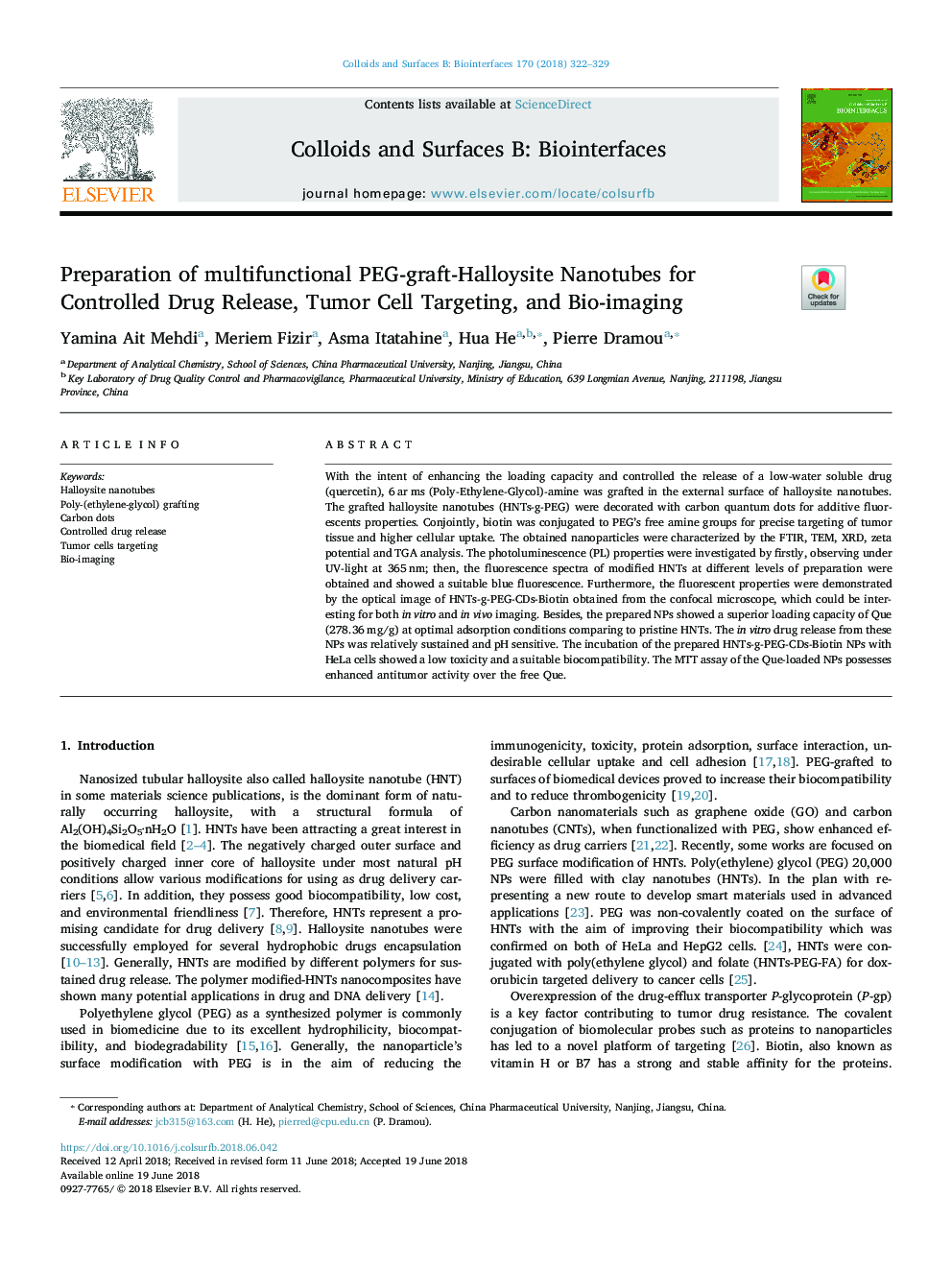| Article ID | Journal | Published Year | Pages | File Type |
|---|---|---|---|---|
| 6980205 | Colloids and Surfaces B: Biointerfaces | 2018 | 8 Pages |
Abstract
With the intent of enhancing the loading capacity and controlled the release of a low-water soluble drug (quercetin), 6â¯arâ¯ms (Poly-Ethylene-Glycol)-amine was grafted in the external surface of halloysite nanotubes. The grafted halloysite nanotubes (HNTs-g-PEG) were decorated with carbon quantum dots for additive fluorescents properties. Conjointly, biotin was conjugated to PEG's free amine groups for precise targeting of tumor tissue and higher cellular uptake. The obtained nanoparticles were characterized by the FTIR, TEM, XRD, zeta potential and TGA analysis. The photoluminescence (PL) properties were investigated by firstly, observing under UV-light at 365â¯nm; then, the fluorescence spectra of modified HNTs at different levels of preparation were obtained and showed a suitable blue fluorescence. Furthermore, the fluorescent properties were demonstrated by the optical image of HNTs-g-PEG-CDs-Biotin obtained from the confocal microscope, which could be interesting for both in vitro and in vivo imaging. Besides, the prepared NPs showed a superior loading capacity of Que (278.36â¯mg/g) at optimal adsorption conditions comparing to pristine HNTs. The in vitro drug release from these NPs was relatively sustained and pH sensitive. The incubation of the prepared HNTs-g-PEG-CDs-Biotin NPs with HeLa cells showed a low toxicity and a suitable biocompatibility. The MTT assay of the Que-loaded NPs possesses enhanced antitumor activity over the free Que.
Related Topics
Physical Sciences and Engineering
Chemical Engineering
Colloid and Surface Chemistry
Authors
Yamina Ait Mehdi, Meriem Fizir, Asma Itatahine, Hua He, Pierre Dramou,
